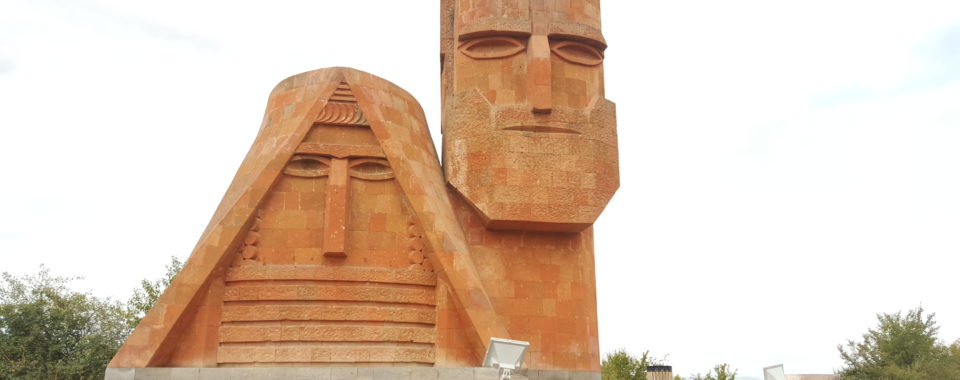BY PATRICIA TAFT NASRI
In the 2021 Fragile States Index, among the countries that experienced the greatest increases in fragility, issues of group-based identity and historical grievances combined to give rise to instability. This was certainly true in the United States, where years of partisan politics have turned former political adversaries into political enemies, and finding common ground seemed more elusive than ever. This can also be said for the small country of Armenia, where the eruption of simmering identity politics rooted in nearly a quarter century of historical grievances gave rise to a devastating war with neighboring Azerbaijan. However, relying on ghosts of the past to tell the present story gives an incomplete picture. Other factors at play over the year, including increased economic hardship as a result of the COVID-19 pandemic in a region already suffering significant economic disparities, and the role of other countries in the conflict, must also be considered.
While it is not uncommon to hear scholars of this region, and many parts of the former Soviet space, refer to such conflicts as “frozen,” this term is deeply misleading. For those living in Armenia and Azerbaijan, and certainly in the contested region of Nagorno-Karabakh, the past is anything but frozen. The eruption of hostilities in the region in the autumn of 2020, which killed hundreds, including an estimated 150 civilians, should not have come as a surprise. While much of the world may have assumed the absence of sustained violence equated to some form of stability, however tenuous, this misperception continues to fuel inaction or half-measures when it comes to confronting seemingly intractable conflicts like Nagorno-Karabakh.

In the case of Armenia, years of low intensity conflict in the contested region, combined with growing economic isolation and hardship, seemed to have been momentarily offset by the “Velvet Revolution” of 2017-2018. With the transformation of the country into a parliamentary republic under the helm of former opposition leader turned Prime Minister, Nikol Pashinyan, who led weeks of protests to foment the transition, Armenia’s future looked bright. This was reflected in the country’s improving scores on the FSI in 2018 and 2019. But while it appeared that the country’s political fortunes were improving, long standing structural vulnerabilities were not so easily transformed. These included a sputtering economy, the unresolved territorial dispute over Nagorno Karabakh, and the continued reliance on outside powers, namely Russia, to provide security.
It also must be noted that both Armenia and Azerbaijan, while at times backing away from overt brinksmanship, also continued to use nationalist and inflammatory rhetoric in regard to the conflict in Nagorno-Karabakh. Politicians looking to bolster their political credibility vis-à-vis a hardline stance on the conflict continued to keep past atrocities at the fore of national memory, keeping grievances alive and undermining any nascent attempts at a political compromise or reconciliation. For their part, the powers with the most invested in the region, both political and economically, including Turkey and Russia, have at times used the conflict, and its stalemate, to further their own interests. Now, in the ashes of the latest war, both have made key strategic gains in a region that has long found itself at the crossroads of history’s great power games.
Now is not the time to walk away or return to a reliance on an uneasy truce in place of working towards a real political settlement. The latest conflict essentially reversed the position of Armenia and Azerbaijan from the last civil war, when Armenia seized most of the contested territory and left Azerbaijanis, both within and outside of the territory, profoundly aggrieved. Like Azerbaijan then, Armenia now finds itself in a situation where the influx of refugees, the fate of important cultural and historical sites, and the role of foreign powers in the latest war may all feed national grievances. These outcomes come on the back of a crushing and unexpected military defeat and what many inside Armenia see as Pashinyan’s capitulation to Russian interests, and have fueled a series of large protests in the war’s aftermath. While a comprehensive solution that addresses these myriad and complex issues will undoubtedly require thinking outside of the box, the absence of such engagement holds the high probability of a return to conflict in the future.
The larger lesson to be learned, perhaps, from the latest war in this small but strategically significant region is that frozen conflicts rarely thaw peacefully. Rather, deep and unresolved grievances create an exceptionally unstable foundation for any nation. When combined with unforeseen shocks such as a global pandemic, economic downturn, or simply a miscalculation of interests, these “old ghosts” prove themselves anything but vanquished.
Image licensed under Creative Commons Attribution-NonCommercial-NoDerivatives 2.0 Generic license.
